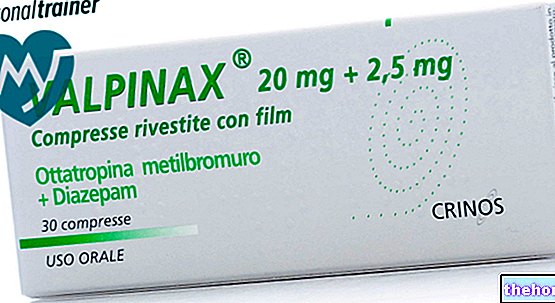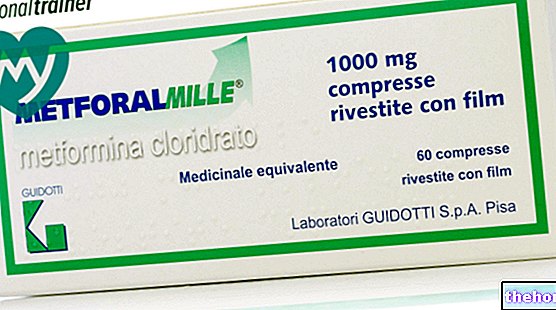Active ingredients: Etonogestrel
Nexplanon, 68 mg implant for subcutaneous use
Indications Why is Nexplanon used? What is it for?
Nexplanon is a contraceptive implant preloaded in a disposable applicator. The implant is a small, soft, flexible plastic stick, 4 cm long and 2 mm in diameter that contains 68 milligrams of the active ingredient etonogestrel. The applicator allows the healthcare professional to insert the implant just below the skin in the upper arm. Etonogestrel is a synthetic female hormone similar to progesterone. A small amount of etonogestrel is continuously released into the bloodstream. The implant is made of ethylene vinyl acetate copolymer, a plastic that does not dissolve in the body. The implant contains a small amount of barium sulfate which makes it visible on X-rays.
Nexplanon is used for the prevention of pregnancy.
How Nexplanon works
The implant is placed just under the skin. The active ingredient, etonogestrel, works in two ways:
- prevents the release of an egg cell from the ovaries;
- it causes changes in the cervix that make it difficult for sperm to enter the uterus.
Consequently, Nexplanon protects against unwanted pregnancy for a period of three years, but if you are overweight your doctor may advise you to replace the implant before this term. Nexplanon is one of several methods of preventing conception. Another frequently used method of preventing conception. birth control is the combined type pill. As opposed to the combined type pill, however, Nexplanon can be used by women who cannot or do not want to use estrogen. When using Nexplanon you do not have to remember to take the pill everyone the days. This is one of the reasons why Nexplanon is very reliable (efficacy greater than 99%). In rare cases the implant is not inserted correctly or has not been inserted at all, in these cases it may not be protected against pregnancy . During the use of Nexplanon, menstrual bleeding may change and become absent, irregular, infrequent, frequent, prolonged or rarely abundant. The experience of bleeding during the first three months is largely predictive of your future bleeding.
An improvement in painful menstruation can be observed. You can stop using Nexplanon at any time (see also "If you want to stop using Nexplanon").
Contraindications When Nexplanon should not be used
Do not use Nexplanon Do not use Nexplanon if you have any of the conditions listed below. If any of these apply to you, tell your doctor before Nexplanon is inserted. Your doctor may advise you to use a non-hormonal method of birth control.
- If you are allergic to etonogestrel or any of the other ingredients of this medicine
- If you have a thrombosis thrombosis is the formation of a blood clot in a blood vessel [for example in the legs (deep vein thrombosis) or in the lungs (pulmonary embolism)].
- If you have or have had jaundice (yellowing of the skin), severe liver disease (the liver does not work properly) or liver cancer.
- If you have, have had or might have breast or genital cancer.
- If you have ever had vaginal bleeding of unknown origin.
If any of these conditions appear for the first time while using Nexplanon, contact your doctor immediately.
Precautions for use What you need to know before taking Nexplanon
Hormonal contraceptives, including Nexplanon, do not protect against HIV infection (AIDS) or any other sexually transmitted disease.
Talk to your doctor, pharmacist or nurse before using Nexplanon.
If Nexplanon is used in the presence of any of the conditions listed below, it may need close supervision. Your doctor will tell you what to do. If any of these conditions apply to you, tell your doctor before Nexplanon is inserted. Also tell your doctor if any of these conditions develop or worsen while using Nexplanon:
- if you have ever had breast cancer
- if you have or have suffered from liver disease
- if you have ever had a thrombosis
- if you have diabetes
- if you are overweight
- if you suffer from epilepsy
- if you suffer from tuberculosis
- if you have high blood pressure
- if you have or have had chloasma (yellow-brown patches on the skin, especially on the face); in this case, excessive exposure to the sun or ultraviolet radiation must be avoided.
Possible serious conditions
Cancer
The information below has emerged in studies conducted in women who take a combined oral contraceptive containing two different female hormones (the "pill") on a daily basis. It is not known whether these observations also apply to women using a different hormonal contraceptive, such as implants containing only a progestogen.
Breast cancer has been detected slightly more often in women using the combined oral pill, but it is not known whether this is caused by the treatment. For example, it can also be assumed that tumors are found more frequently in women using the combined pill because they undergo medical checks more frequently. The increased incidence of breast cancer gradually decreases after stopping the combined pill. It is important to check your breasts regularly and see your doctor if you feel a lump. Also tell your doctor if a close relative has or has ever had breast cancer. .
Benign liver tumors and even more rarely malignant liver tumors have been reported in women taking the Pill. If you experience severe abdominal pain, consult your doctor immediately.
Thrombosis
The presence of a blood clot in a vein (known as a "venous thrombosis") can block the vein.Thrombosis can occur in the veins of the legs, lungs (pulmonary embolism) or other organs. The presence of a blood clot in an "artery (known as an" arterial thrombosis ") can block the artery. For example, a blood clot in an artery can cause a heart attack or in the brain it can cause a stroke.
The use of any combined hormonal contraceptive increases a woman's risk of developing these clots compared to a woman who is not taking any combined hormonal contraceptive. This risk is not as high as that of developing a blood clot during pregnancy. It is believed to be. that the risk related to progestogen-only methods, such as Nexplanon, is lower than with pills that also contain estrogen. There have been reports of blood clot formation such as pulmonary embolism, deep vein thrombosis, heart attacks and strokes in women who use etonogestrel implants; however, the available data do not suggest an increased risk of these events in women using the implant. If you suddenly notice possible signs of a thrombosis, see your doctor immediately (see also "When to contact your doctor").
Other conditions
Changes in the menstrual profile
As with other progestogen-only contraceptives, changes in menstrual bleeding may occur during use of Nexplanon. Changes in frequency (absent, less frequent or more frequent, or continuous), intensity (decreased or increased) may occur. ) or duration. The absence of bleeding was reported by about 1 in 5 women and 1 in 5 women reported frequent and / or prolonged vaginal bleeding. Heavy bleeding has occasionally been observed. In clinical studies, changes in vaginal bleeding were the most common reason for treatment discontinuation (approximately 11%).
The experience of bleeding during the first three months is largely predictive of your future bleeding. A change in the bleeding pattern does not mean that Nexplanon is not suitable for you or that it is not providing you with contraceptive protection. Normally, no contraceptive protection is needed. intervention If menstrual bleeding is intense or prolonged, you should consult your doctor.
Events related to insertion and removal
If it has not been inserted correctly or has been inserted too deeply and / or due to external forces (eg, manipulation of the implant or contact sports), the implant may move from the original insertion point. In these cases, implant location may be more difficult and removal may require a larger incision. If the implant cannot be located and there are no signs of expulsion, the contraceptive effect and the risk of progestogen-related side effects may persist for longer than desired.
Ovarian cysts
During the use of all low-dose hormonal contraceptives, small collections of fluid can form in the ovaries. These are the so-called ovarian cysts, which usually disappear spontaneously. Sometimes they can cause mild abdominal pain. Only rarely can they lead to more serious complications. .
Broken or bent implant
If the implant breaks or bends while it is inserted in the arm, its function should not be affected. Contact your healthcare professional if you are unsure.
Interactions Which drugs or foods can modify the effect of Nexplanon
Tell your doctor if you are taking or have recently taken any other medicines or herbal products, including those obtained without a prescription. Some medicines can prevent Nexplanon from working properly. These include medicines used in the treatment of the following diseases:
- epilepsy (e.g. primidone, phenytoin, barbiturates, carbamazepine, oxcarbazepine, topiramate, felbamate),
- tuberculosis (e.g. rifampicin),
- HIV infections (e.g. ritonavir, nelfinavir, nevirapine, efavirenz);
- other infectious diseases (e.g. griseofulvin),
- high blood pressure in the blood vessels of the lungs (bosentan),
- depression (the remedy based on St. John's wort (Hypericum perforatum)).
Nexplanon can also interfere with the action of other medicines, for example it can increase the activity of cyclosporine and reduce the effect of lamotrigine. Always tell the doctor who prescribes Nexplanon which medicines or herbal products you are already taking. any doctor or dentist who prescribes another medicine (or your pharmacist) is also using Nexplanon. They can tell you if you need to take additional non-hormonal contraceptive precautions and for how long, as the interaction can last up to four weeks later. stopping the medicine. If you have been taking medicines for a long time that make Nexplanon less effective, your doctor may also advise you to remove the implant and recommend a birth control method that can be used effectively with these medicines. If you want to use products containing the herb. John's wort while you are using Nexplanon, you need to consult your doctor first.
Nexplanon with food and drink
There are no indications of any effect of food and drink on the use of Nexplanon.
Warnings It is important to know that:
Pregnancy and breastfeeding
You should not use Nexplanon if you are pregnant or think you are. If in doubt, do a pregnancy test before you start using Nexplanon.
Nexplanon can be used during breastfeeding. Although small amounts of the active substance in Nexplanon pass into breast milk, there is no effect on milk production or quality or on the growth and development of the baby.
If you are breast-feeding, ask your doctor for advice before using this medicine.
Driving and using machines
There are no signs of any effect of the use of Nexplanon on alertness and concentration.
When to contact the doctor?
Regular medical check-ups
Prior to the insertion of Nexplanon, the healthcare professional will ask you some questions about your personal medical history and that of your close relatives. Your healthcare professional will also measure your blood pressure and, depending on your personal situation, may also carry out other tests. While using Nexplanon, your healthcare professional may ask you to come back for a (routine) medical check-up for some time. after the insertion of Nexplanon. The frequency and nature of further checks will depend on your personal situation.
See your doctor as soon as possible if:
- notice any change in your state of health, especially if it involves any of the aspects mentioned in this leaflet (see also "Do not use Nexplanon" and "Warnings and precautions"; do not forget the aspects related to close family members);
- notice possible signs of thrombosis such as severe pain or swelling in one of the legs, unexplained chest pain, shortness of breath, unusual cough, especially if accompanied by bleeding;
- have sudden severe stomach pain or have a yellow discoloration of the skin;
- you feel a lump in your breast (see also "Cancer");
- have sudden or severe pain in the lower abdomen or stomach;
- have unusual, profuse vaginal bleeding;
- must be immobilized (e.g. bedridden) or undergo surgery (consult your doctor at least four weeks in advance);
- you suspect you are pregnant.
Dose, Method and Time of Administration How to use Nexplanon: Posology
If you are pregnant or think you may be pregnant, please tell your healthcare professional before Nexplanon is inserted (for example if you have had unprotected intercourse during your current menstrual cycle).
How to use
Nexplanon should only be inserted and removed by a healthcare professional who is familiar with the procedures described on the other side of this leaflet. The healthcare practitioner will decide with you when is the most suitable time for insertion. This depends on your personal situation. (eg from the birth control method you are currently using.) Unless you switch to Nexplanon from another hormonal contraceptive method, insertion should be done on day 1-5 of your spontaneous menstrual cycle to rule out pregnancy. Your healthcare professional will advise you on this (for more information see the paragraph "When to insert Nexplanon").
Before inserting or removing Nexplanon, your healthcare professional will administer a local anesthetic. Nexplanon is placed directly under the skin, inside the non-dominant upper arm (the arm that does not use for writing). A description of the procedure for inserting and removing Nexplanon is given in paragraph 6.
Nexplanon must be removed or replaced no later than three years after insertion. To help you remember when and where Nexplanon was inserted and when, at the latest, Nexplanon needs to be removed, your healthcare professional will give you a card for the "user who reports this information. Keep it in a safe place.
At the end of the insertion procedure, the healthcare professional will ask you to feel the implant by palpation. A correctly inserted implant must be clearly palpable by both the healthcare professional and yourself; correct insertion is assured when both ends of the implant can be lifted between thumb and forefinger. It should be known that palpation is not suitable for 100% confirmation of the presence of the implant. In case of doubt, even minimal, you will have to use a barrier method (eg a condom) until both you and the operator you will be absolutely certain that the implant has been inserted. In rare cases, the healthcare professional may need to use x-rays, ultrasound or magnetic resonance imaging, or take a blood sample, to ensure that the implant is been placed inside the arm.
If you wish to replace Nexplanon, the new implant can be placed immediately after the removal of the old implant. The new implant can be placed in the same arm and site as the previous implant. Your health care professional will recommend you
If you want to stop using Nexplanon
You can ask the healthcare professional to remove the implant at any time you wish. If unable to locate the implant by palpation, the healthcare professional may use X-rays, ultrasound or MRI to locate the implant. Depending on the exact location of the implant, removal may be a bit difficult and require minor surgery.
If you do not want to become pregnant after removing Nexplanon, ask your healthcare professional about other reliable methods of birth control.
If you stop Nexplanon because you want to become pregnant, it is usually recommended to wait until your next natural period before attempting to conceive. This helps predict the baby's date of birth
Side Effects What are the side effects of Nexplanon
Like all medicines, Nexplanon can cause side effects, although not everybody gets them.
During the use of Nexplanon, menstrual bleeding may occur at irregular intervals. It may be only mild spotting that does not even require the use of a sanitary pad, or more intense bleeding, which resembles a light period and requires the use of sorbents. You may also not have any bleeding. Irregular bleeding is not a sign of reduced contraceptive protection with Nexplanon. No intervention is normally required. However, if bleeding is severe or prolonged, consult your doctor. Undesirable effects are described in the sections in section 2 “Cancer” and “Thrombosis.” For more information read these sections and, when necessary, consult your doctor immediately.
The following side effects have been reported:
Apart from the aforementioned side effects, an increase in blood pressure has occasionally been observed. Greasy skin was also observed. You should see your doctor immediately if you experience symptoms of a severe allergic reaction, such as (i) swelling of the face, tongue or pharynx; (ii) difficulty swallowing; or (iii) hives and breathing difficulties. Bruising, pain, swelling or itching and, in rare cases, infection may occur during insertion or removal of Nexplanon. A scar may form or an abscess may develop at the insertion site. sensitivity). Ejection or migration of the implant may occur,
especially if it has not been entered correctly. Surgery to remove the implant may be required. There have been reports of a blood clot forming in a vein (known as' venous thrombosis') or an 'artery (known as' arterial thrombosis') in women who use the etonogestrel implant. A blood clot in a vein can block the vein and can occur in the veins of the legs (deep vein thrombosis), lungs (pulmonary embolus) or other organs. A blood clot in a " artery can block the artery and can cause a heart attack or in the brain it can cause a stroke.
If you get any side effects, talk to your doctor, pharmacist or nurse. This includes any possible side effects not listed in this leaflet.
Reporting of side effects
If you get any side effects, talk to your doctor, pharmacist or nurse. This includes any possible side effects not listed in this leaflet. You can also report side effects directly via the national reporting system at: https: // www. .aifa.gov.it / content / reports-adverse-reactions
By reporting side effects you can help provide more information on the safety of this medicine.
Expiry and Retention
Keep this medicine out of the sight and reach of children.
Do not use this medicine after the expiry date which is stated on the blister and carton.
Store in the original blister.
Do not throw any medicines via wastewater or household waste. Ask your pharmacist how to throw away medicines you no longer use. This will help protect the environment. This medicine does not require any special storage conditions.
What Nexplanon contains
Each applicator contains an implant with the following substances:
- The active ingredient is: etonogestrel (68 mg)
- The other ingredients are: ethylene vinyl acetate copolymer, barium sulfate and magnesium stearate.
What Nexplanon looks like and contents of the pack
Nexplanon is a long-acting hormonal contraceptive for subcutaneous use. It consists of a progestogen-only radio-opaque implant, preloaded in an innovative, ready-to-use, easy-to-use single-use applicator. The whitish implant is 4 cm long and 2 mm in diameter and contains etonogestrel and barium sulfate. The applicator has been designed to facilitate insertion of the implant just under the skin of the upper internal part of the arm (non-dominant). The implant must be inserted and removed by a healthcare professional who is familiar with these procedures. For uncomplicated removal, the implant must be inserted just under the skin (see the other side of this leaflet). Before inserting or removing the implant must use local anesthetic. If you follow the instructions provided, the risk of complications is minimal.
Packaging: cardboard box with 1 blister, cardboard box with 5 blisters.
Not all pack sizes may be marketed
The following images are intended to illustrate insertion and removal procedures only at the woman who will receive the implant.
Note: The exact Nexplanon insertion and removal procedures to be performed by a qualified healthcare professional are outlined in the Summary of Product Characteristics and section 7 on the other side of this user leaflet.
How Nexplanon is inserted
- Nexplanon insertion must be performed by a qualified operator who is familiar with the procedure.
- To facilitate implant insertion, you should lie on your back with your arm bent at the elbow and facing out.
- The implant will be inserted in the innermost part of the non-dominant arm (the arm that does not use for writing).
- The insertion point will be indicated on the skin and the disinfected and anesthetized part.
- The skin is stretched and the needle inserted directly under the skin. Once the tip of the needle is inserted into the skin, it is fully inserted in a motion parallel to the skin.
- The purple slider is unlocked by pressing it lightly down. The slider is moved all the way back to the stop to retract the needle. The implant will remain in the upper arm when the needle is retracted.
- The presence of the implant must be verified by feeling it (palpation) immediately after insertion. The correctly inserted implant can be felt between the thumb and forefinger both by the healthcare professional and by you. Palpation does not allow 100% verification of the presence of the implant.
- In the event that the implant cannot be palpated or in doubtful cases there are other methods to confirm the presence of the implant.
- Until the presence of the implant has been verified, it may not be protected against pregnancy and a barrier method of contraception (eg condoms) should be used.
- You will be put on sterile gauze with a pressure bandage to reduce the hematoma. You can remove the pressure bandage after 24 hours and the small gauze over the insertion after 3 to 5 days.
- After insertion of the implant, the healthcare professional will give you the user card showing the insertion site, the insertion date and the latest date by which the implant must be removed or replaced. Keep the card in a safe place, as the information it contains can facilitate subsequent removal.
How should you remove Nexplanon
- The implant should only be removed by a qualified healthcare professional who is familiar with the procedure.
- The implant is removed either at his request or at the latest within 3 years of insertion.
- The location of the insertion site is indicated in the form for the user.
- The healthcare provider will locate the implant. If the implant is not localizable, the healthcare professional can use X-rays, ultrasound or magnetic resonance imaging.
- Your arm will be disinfected and anesthetized.
- A small incision will be made along the arm just below the tip of the implant.
- The implant is gently pushed through the incision and removed with forceps.
- Occasionally the implant may be surrounded by hard tissue. In this case a small cut must be made in this tissue before removing the implant.
- If the healthcare professional wants to replace Nexplanon with another implant, the new implant can be placed using the same incision.
- The incision will be closed with a sterile plaster.
- You will be given sterile gauze with a pressure bandage to minimize the hematoma. You can remove the pressure bandage after 24 hours and the small gauze over the insertion site after 3-5 days.
Source Package Leaflet: AIFA (Italian Medicines Agency). Content published in January 2016. The information present may not be up-to-date.
To have access to the most up-to-date version, it is advisable to access the AIFA (Italian Medicines Agency) website. Disclaimer and useful information.




























